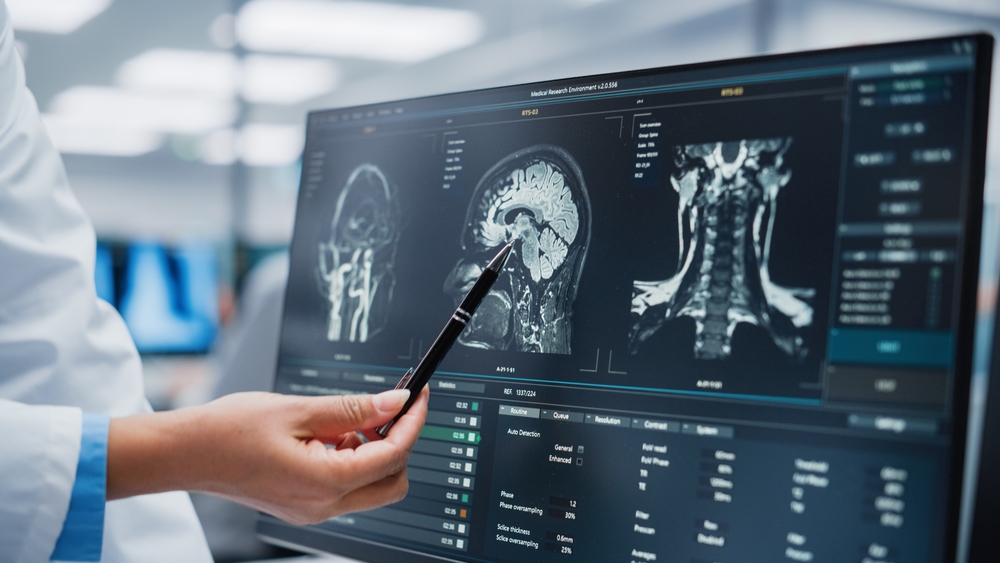Researchers from Stanford Medicine have developed an AI model designed to improve the diagnosis and treatment of glioblastoma, a particularly aggressive form of brain cancer.
Glioblastoma presents unique challenges to medical professionals due to its highly variable cellular makeup from patient to patient.
Olivier Gevaert, associate professor of biomedical informatics and data science, highlighted the complexity of treating glioblastoma, stating, “Because of the heterogeneity of this disease, scientists haven’t found good ways of tackling it.”
The AI model aims to mitigate this problem by analyzing stained images of glioblastoma tissue to assess its characteristics, including the tumor’s aggressiveness and genetic makeup.
Yuanning Zheng, from Gevaert’s lab, described the AI system as “sort of a decision support system for the physicians.”
The model could help clinicians identify patients with cellular characteristics indicative of more aggressive tumors, flagging them for rapid follow-up. It creates a more detailed map of the tumor, revealing cell-to-cell interactions and how these correlate with patient outcomes.
Gevaert elaborated, “The model showed which cells like to be together, which cells don’t want to communicate and how this correlates with patient outcomes.”
For instance, the model found that the clustering of specific cells, known as astrocytes, indicated a more aggressive form of the cancer. These insights could potentially help in designing more effective treatments for glioblastoma.
Zheng hopes that the model can also serve as a post-operative assessment tool. The model showed that tumor cells displaying signs of oxygen deprivation often correlated with worse cancer outcomes.
“By illuminating the oxygen-deprived cells in histology-stained surgery samples, the model can help surgeons understand how many cancerous cells may be left in the brain, and how soon to resume treatment after the surgery,” Zheng stated.
While still in the research phase, the model has the potential to be applied to other cancers, such as breast or lung cancers.
Zheng concluded, “I think these multimodal data integrations can shape the improvement of personalized medicine in the future.”
Currently, a proof-of-concept version of their model, named GBM360, is available for researchers to test and upload diagnostic images to predict glioblastoma patient outcomes.
However, Zheng hastened to add that the model is still in the research phase and not used in real clinical settings.
More about the study
The study uses AI to interpret glioblastoma subtypes from existing patient data, helping clinicians determine disease prognosis and development for different patients.
Here’s how it works:
- Data integration: The researchers began by integrating multiple forms of data, including single-cell RNA sequencing and spatial transcriptomics, alongside clinical outcomes from glioblastoma patients. This provided a robust dataset for developing machine learning (ML) models.
- Model development: The team developed GBM-CNN, a specialized deep-learning model designed to interpret histology images. This model was trained to predict the different transcriptional subtypes of glioblastoma cells, using the integrated data for validation.
- Large-scale analysis: After training, GBM-CNN was employed to analyze over 40 million tissue spots from 410 patients, creating high-resolution cellular maps. The analysis revealed the presence of three to five malignant subtypes in each tumor.
- Correlation with clinical data: The cellular maps were then integrated with patient clinical data. It was found that certain cellular compositions are linked to poorer patient outcomes.
- Validation and testing: To corroborate these findings, a secondary model was developed to predict patient prognosis based on other diagnostic images. This model confirmed the initial findings, showing associations between cellular architecture and patient survival rates.
AI is vastly accelerating data-driven approaches to healthcare, supporting MRI scanning, eye disease diagnostics, and sophisticated brain-computer interfaces, to name but a few of its myriad of applications.





